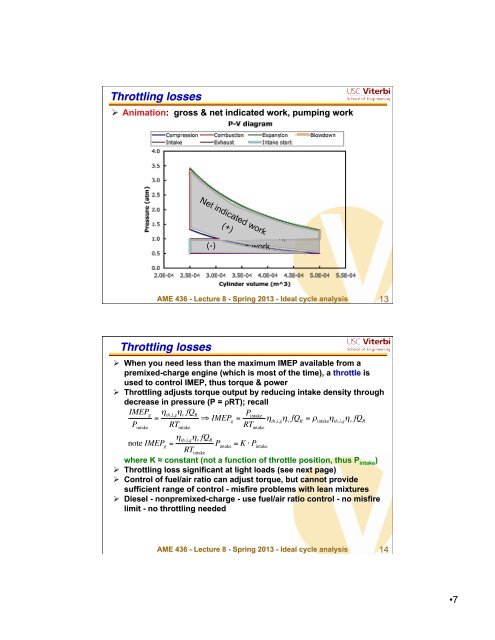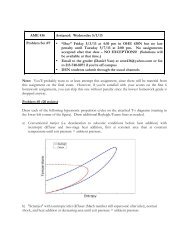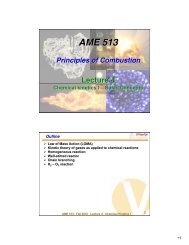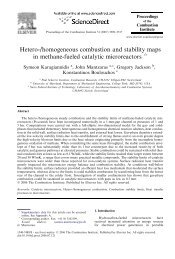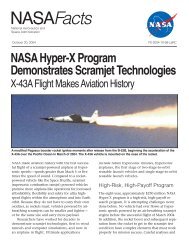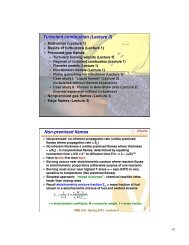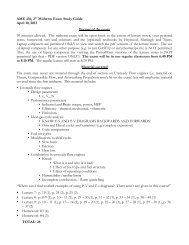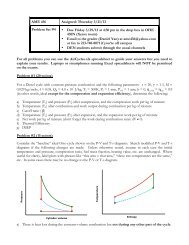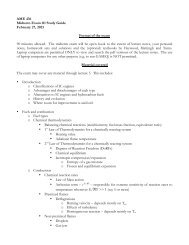AME 436
AME 436
AME 436
Create successful ePaper yourself
Turn your PDF publications into a flip-book with our unique Google optimized e-Paper software.
Throttling losses"<br />
Animation: gross & net indicated work, pumping work<br />
Net indicated work<br />
Gross indicated work<br />
(+)<br />
(-)! Pumping work<br />
<strong>AME</strong> <strong>436</strong> - Lecture 8 - Spring 2013 - Ideal cycle analysis<br />
13<br />
Throttling losses"<br />
When you need less than the maximum IMEP available from a<br />
premixed-charge engine (which is most of the time), a throttle is<br />
used to control IMEP, thus torque & power<br />
Throttling adjusts torque output by reducing intake density through<br />
decrease in pressure (P = ρRT); recall<br />
IMEP g<br />
P intake<br />
= " th,i,g" v<br />
fQ R<br />
RT intake<br />
# IMEP g<br />
= P intake<br />
RT intake<br />
" th,i,g<br />
" v<br />
fQ R<br />
= $ intake<br />
" th,i,g<br />
" v<br />
fQ R<br />
!<br />
note IMEP g<br />
= " th,i,g" v<br />
fQ R<br />
P intake<br />
= K % P intake<br />
RT intake<br />
where K ≈ constant (not a function of throttle position, thus P intake )<br />
Throttling loss significant at light loads (see next page)<br />
Control of fuel/air ratio can adjust torque, but cannot provide<br />
sufficient range of control - misfire problems with lean mixtures<br />
Diesel - nonpremixed-charge - use fuel/air ratio control - no misfire<br />
limit - no throttling needed<br />
<strong>AME</strong> <strong>436</strong> - Lecture 8 - Spring 2013 - Ideal cycle analysis<br />
14<br />
• 7


